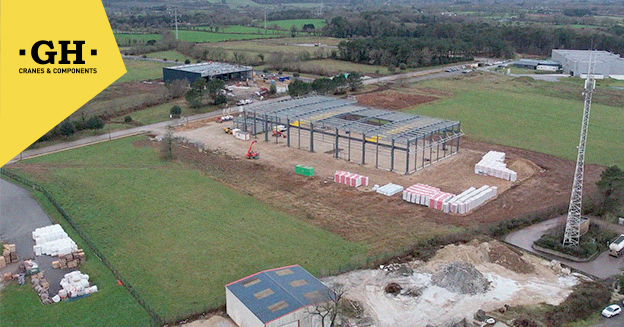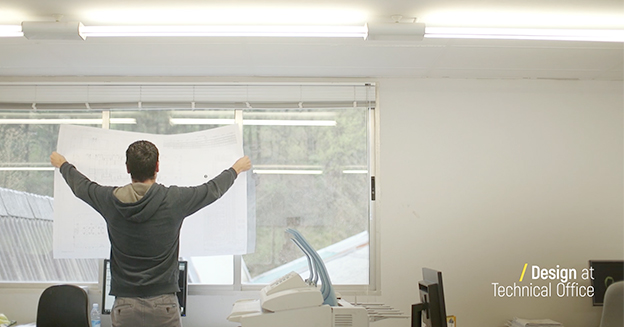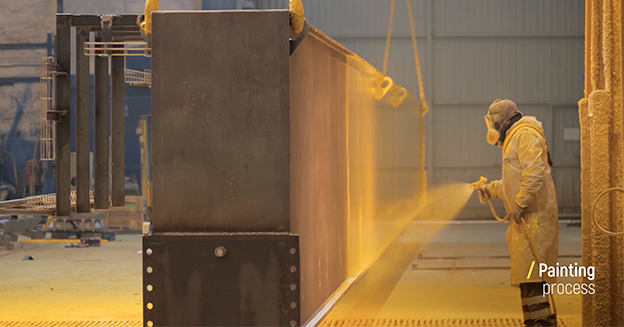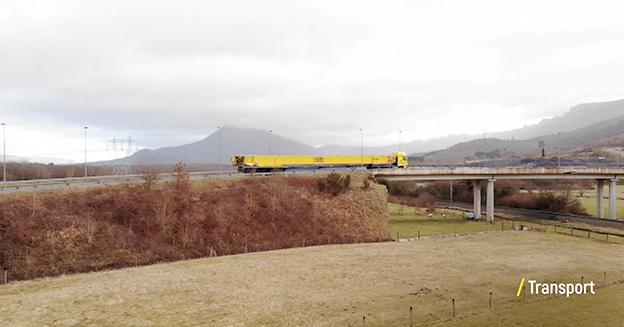Have you seen the audiovisual piece in which we show the entire manufacturing, transport and installation process of three single girder cranes in Normandy? This was a project carried out by our colleagues at GH France for the company Le Normand, one of their most stable and long-standing customers. We take advantage of this “audiovisual premiere” to chat with Javier Jimeno, Manager of GH France, and find out more about this project.
GH France today
France was one of the first markets that GH took on at the export level. “Being so close to the headquarters, France is a natural market for GH, easy to attack, easy to control …” explains Javier.
For this reason, GH has been present in France since the early 1990s, first through an intermediary company in Lyon, and later with its own facilities in Hendaye.
However, in 2011 the decision was taken to buy an independent company that marketed GH products in Nantes called MR2I, which led to the closing of the Hendaye facilities and the regional office moving there.
Javier Jimeno has been manager of GH France since then, with the presence of sales managers David Moulin and Ruth Vizcarra also standing out. “They have been working for GH all their lives and their work is essential for the regional office,” says Javier.
“GH France currently has 38 members of staff, and we have two professional activities: one is the sale of products manufactured in Beasain and the other is the maintenance of these products,” he explains.
To carry out this technical service, GH France also has offices in Orleans and Troyes.
The Le Normand project
There are many customers with whom GH France maintains a stable and lasting relationship. One of them is Le Normand, a historic agricultural trailer company with which we have been working for 10 years.
In 2021, Le Normand began the construction of their new factory, and they asked GH to transfer our cranes and manufacture three new ones. “Although it is unusual to work so far in advance, this customer specifically closed the order a year before,” says Javier.
At that time, both companies decided to record the process on video to document how a crane is constructed from start to finish in an audiovisual format.
THE ENTIRE PROCESS
Technical office
Once the characteristics and measurements of the crane have been agreed with the customer, it begins to take shape in the GH technical office, located in Beasain. According to Javier, around three people are needed to manage a standard crane project, “one person working on the administration, another for the mechanical work and a third for the electrical work”. Between the three of them they produce a general drawing of the crane that is validated with the customer. Once the customer’s OK has been received, manufacturing begins in the workshop.
Manufacturing in the workshop
The manufacture of a crane in the workshop takes approximately four weeks. “First, the components are manufactured, which takes about three weeks. After that, within a week the Bakaiku workers construct the girders, assemble the components and leave the crane painted and ready,” says Javier.
“Despite their enormous size, the cranes have to be built accurately, to the millimetre.” That is why, for Javier, this is perhaps the most critical factor and where the greatest care must be taken when manufacturing the crane. “Luckily, it’s a job that we do all the time and so it’s not a problem for us,” he says.
Finally, once the crane has been built, the correct operation of all the components of the crane must be checked. To do this, a variety of tests operating without load are carried out. “Before leaving the factory, the crane has been almost 100% checked and tested,” says Javier.
Transportation and installation
Transporting a crane of such length – 34 metres in the case of Le Normand – is not an easy task. Special transport and its consequent permission from the authorities is required. According to Javier, “it often takes longer to get that permit than to manufacture the crane itself.” Fortunately, at GH we are more than used to this and are completely familiar with the procedure. In addition, we have a very fluid relationship with carriers that “are more than just suppliers”.
On this occasion, the transport from Beasain to Normandy took three days, and no notable incidents occurred. Once at its destination, a GH technical team was in charge of installing the crane and making it ready for operation. “The truth is that, since it has been installed, I haven’t spoken to the customer again, which is a good sign. It means that everything is going well and that they are satisfied,” says Javier.
The future of GH in France
GH’s objective in France is to continue growing. “We are a reliable and serious company, and our product reflects that,” says Javier. “Despite the fact that our competitors are very well established, our fundamental objective is to continue improving our market position. We currently build an average of 180 cranes a year in France, but we are capable of producing more. We are working to achieve this goal.”
In addition, in parallel, there is a medium-term project with the objective of providing a quality technical service throughout France. “We already provide technical service throughout the country, but in some areas, due to the distances, we can’t be as competitive,” Javier points out. “The idea is to create technical service stations in different parts of the country so that we are able to be more responsive,” he concludes.
http://https://youtu.be/2Y-Xu9vl9LU



